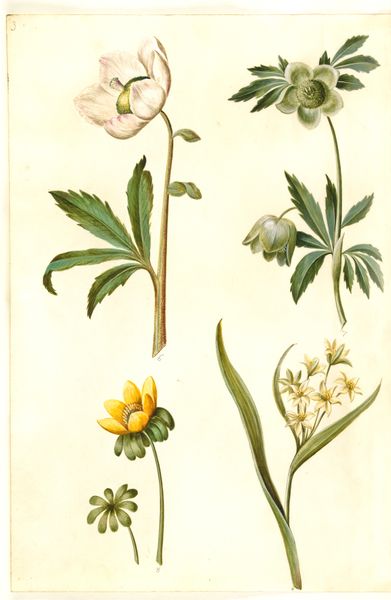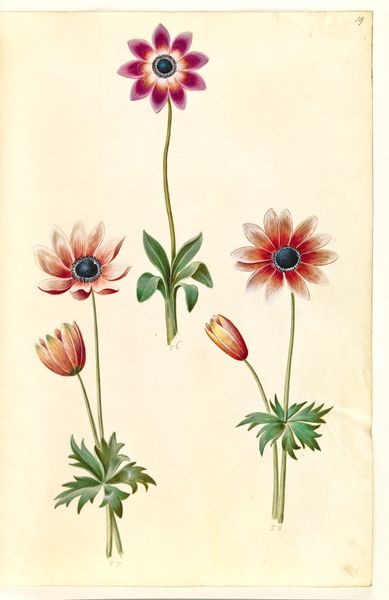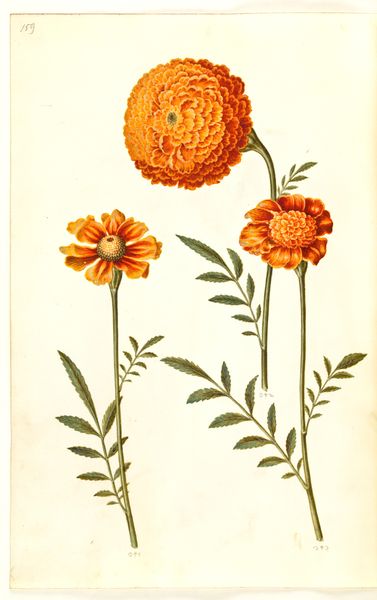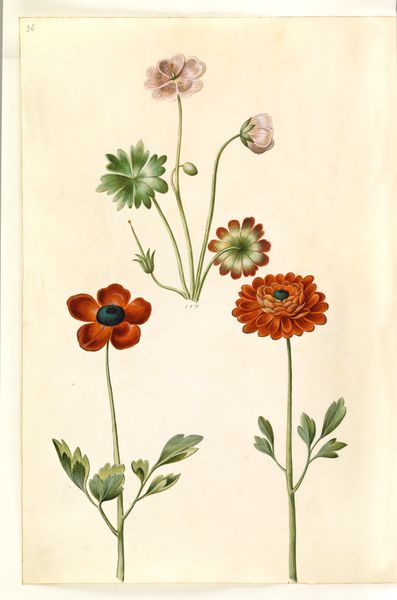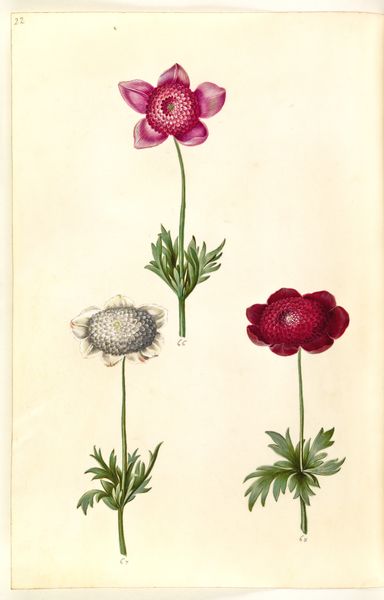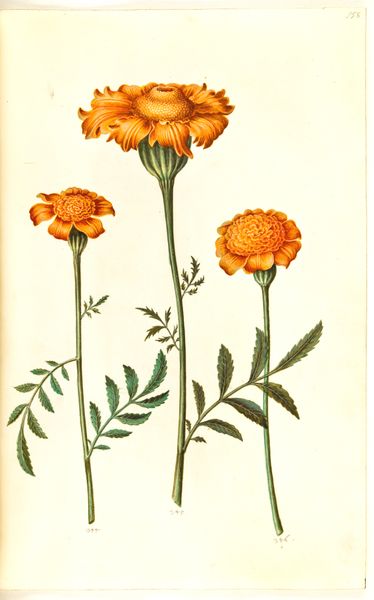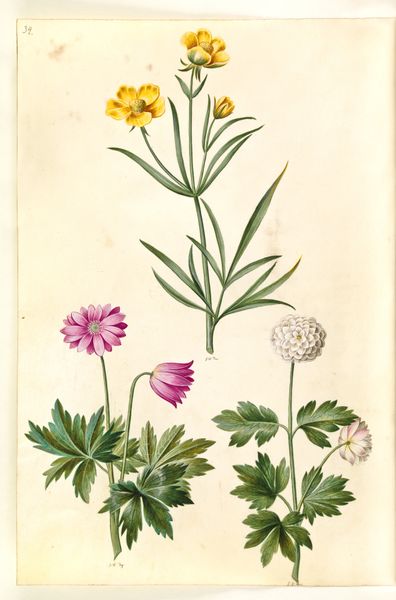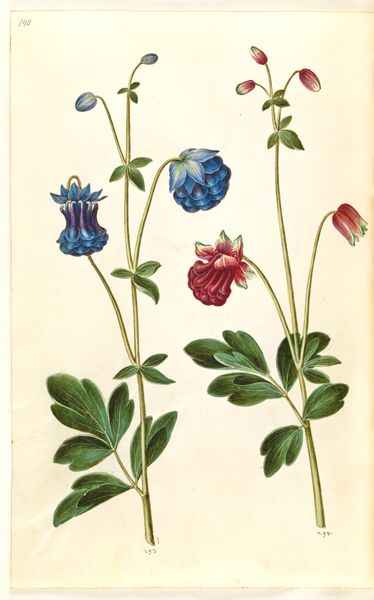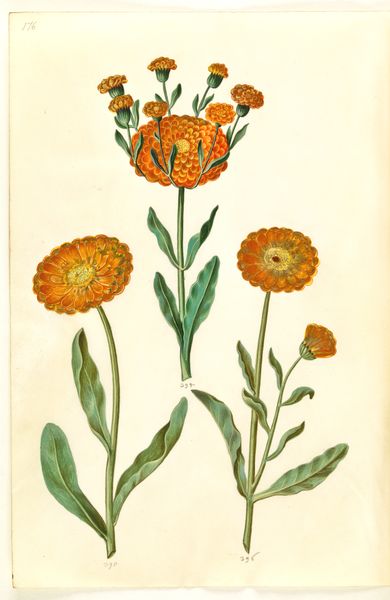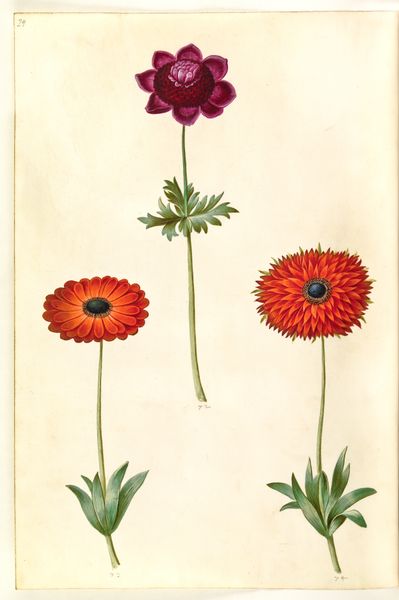
Trollius europaeus (europæisk engblomme); Ranunculus asiaticus (have-ranunkel) 1635 - 1664
0:00
0:00
drawing, gouache
#
vegetal
#
drawing
#
egg art
#
gouache
#
culinary art
#
food illustration
#
botanical photography
#
food art
#
watercolour illustration
#
botanical art
#
watercolor
#
warm toned green
Dimensions: 375 mm (height) x 265 mm (width) x 85 mm (depth) (monteringsmaal), 358 mm (height) x 250 mm (width) (bladmaal)
This botanical study was painted by Hans Simon Holtzbecker, likely in Denmark, sometime in the mid-17th century. It depicts a European globeflower and an Asiatic buttercup with almost scientific precision. The rise of botanical illustration in the 17th century is closely tied to the development of science and medicine. Accurate visual records of plants were essential for identifying and classifying species, as well as understanding their medicinal properties. This was a period of increased exploration, and the circulation of knowledge about the natural world was crucial for trade and colonization. Holtzbecker was a sought-after artist, employed by the Danish court. Patrons like King Christian IV commissioned illustrated books of flowers and plants, reflecting the cultural values of the time. These books acted as status symbols, demonstrating wealth, and education, and signaling an interest in the burgeoning scientific world. To fully understand such artworks, we must consider the cultural and institutional context in which they were produced. Research into the history of science, the role of the court, and the development of printing techniques can provide valuable insights.
Comments
No comments
Be the first to comment and join the conversation on the ultimate creative platform.
